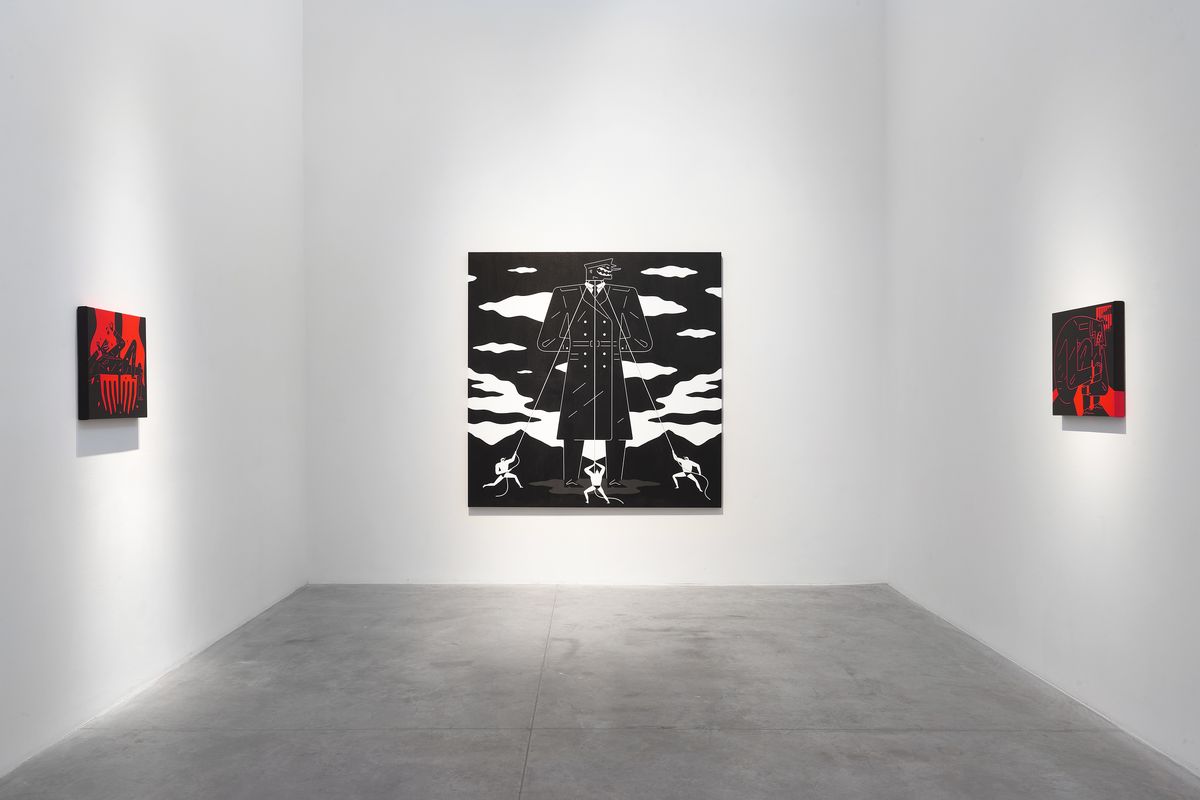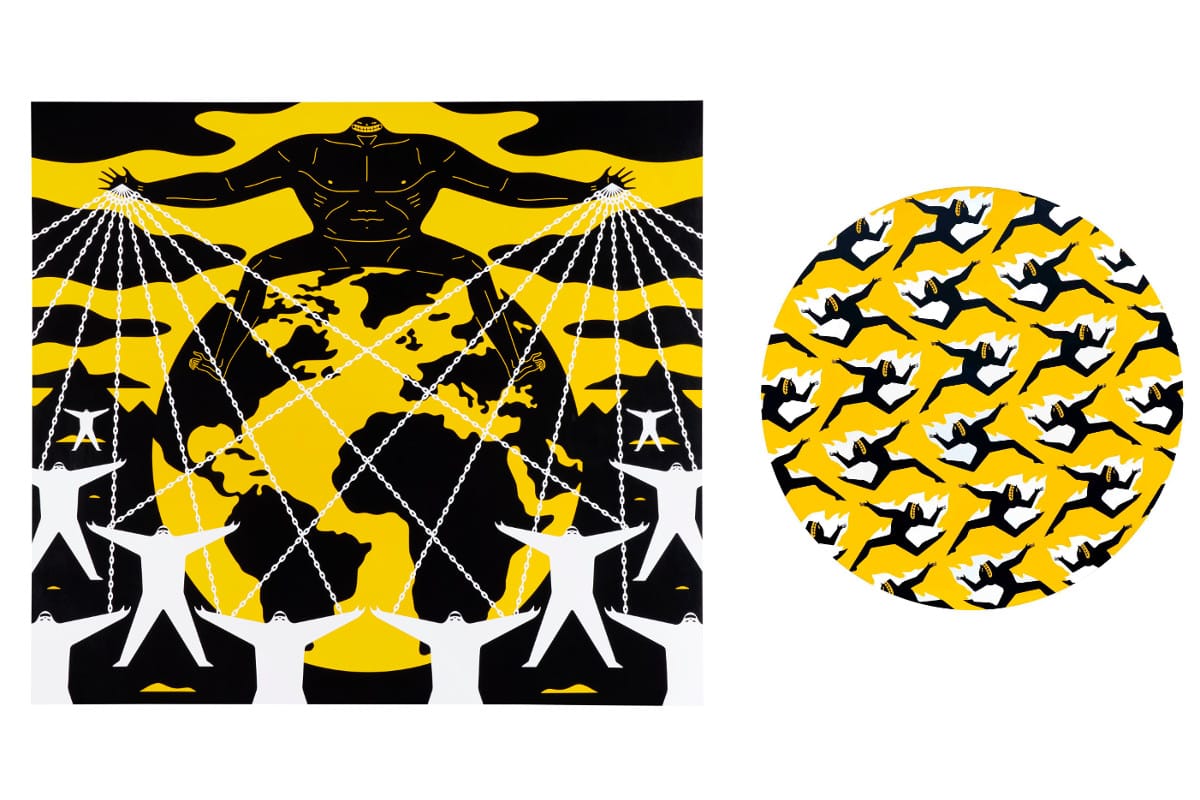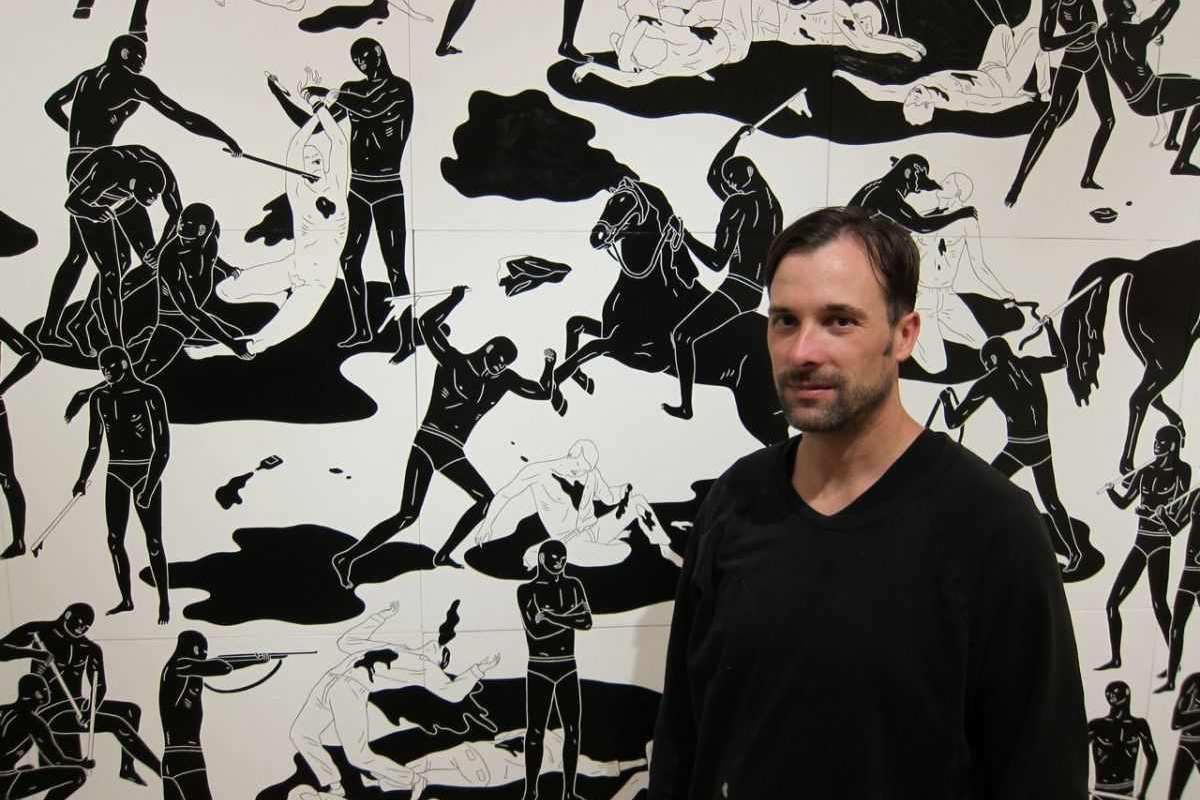Cleon Peterson Jewish - Exploring His Artistic Identity
For someone like Cleon Peterson, whose powerful artwork really gets people talking, it's quite natural for many to wonder about his personal story and background. His creations, you know, have a way of sparking deep thought and conversation among those who view them, often leaving a lasting impression.
One question that sometimes comes up, perhaps because of the intense and often story-like feel of his creations, is whether there's a connection to a Jewish heritage. It's almost as if the profound nature of his pieces leads observers to seek out personal links or deeper roots within the artist's own history, looking for, you know, a sort of guiding thread.
This kind of curiosity, honestly, just shows how much people connect with what he puts out into the world. It’s almost like his art invites us to ask bigger questions about identity and where ideas come from, making the discussion around a possible Cleon Peterson Jewish connection a sign of genuine interest in his artistic vision.
Table of Contents
- Cleon Peterson's Artistic Path
- Personal Details - Cleon Peterson
- What Themes Does Cleon Peterson Explore?
- The Eiffel Tower Project - A Historic First
- How Does Cleon Peterson's Art Connect with Audiences?
- Exhibitions and Reach
- Artistic Style and Impact
Cleon Peterson's Artistic Path
Who is Cleon Peterson - A Brief Look?
Cleon Peterson, who lives and works in Los Angeles, California, is an artist known for creating pieces that are, in a way, quite forceful and often show disruption. His art tends to reflect the struggles found in our modern world, giving us, you know, a different view of things. It’s a very direct approach to what he sees around him, often putting forward a somewhat critical look at society’s ways.
He often uses just a few colors – black, white, red, and yellow – in his paintings and prints. This limited palette helps him send a very clear message, almost like a strong declaration, about the back-and-forth between power and those who might be under it, especially within the changing setup of society. The colors themselves are chosen to, perhaps, make that message even bolder, allowing for a striking visual impact that stays with you.
Peterson, you see, is based in Los Angeles, a place that itself is a melting pot of different experiences and challenges. This setting, arguably, provides a rich source of inspiration for his work, which, in some respects, speaks to universal human conditions even as it draws from specific observations. His art is not just about what is seen, but also about what is felt and experienced in the daily grind of contemporary life.
- Ww Xxcom
- Gloria Torres Olifans
- Melora Hardin Young
- T%C3%A3rk If%C3%A5%C3%BFa Gizli Kamera Sotwe
- Cheyenneswenson Nide
The very nature of his artistic output, which can be described as quite intense and at times confronting, naturally leads people to wonder about the person behind it. It's almost as if the art itself encourages a deeper inquiry into the artist's own life story, prompting questions about his background and influences, which, as a matter of fact, is a sign of truly engaging work.
Personal Details - Cleon Peterson
| Name | Cleon Peterson |
| Location | Los Angeles, California, USA |
| Known For | Figurative paintings, sculptures, and murals exploring societal violence and control |
| Key Themes | Violence, marginalization, power dynamics, struggle, barbarity, excess |
| Artistic Style | Subdued tone, stylized, graphical compositions, primitive depictions, chaotic figures |
| Primary Colors Used | Black, White, Red, Yellow |
| Notable Exhibitions | Eiffel Tower (Endless Sleep), solo shows in New York, London, Paris, Sydney |
What Themes Does Cleon Peterson Explore?
His works often show scenes that can be described as very basic, yet they depict moments of struggle and, you know, a certain kind of force. It’s important to note that these images, while simple in form, carry a heavy meaning, speaking to fundamental aspects of human interaction and conflict. The way he presents these ideas is, in a way, very stark, making the message quite clear.
Violence, the pushing aside of groups, and the harsh use of control are recurring ideas in Cleon Peterson’s art. In his paintings, sculptures, and murals, he brings to life scenes of cruelty and, well, too much of everything. These depictions are, arguably, meant to make observers think about the often-unseen or ignored aspects of our collective existence, forcing a look at uncomfortable truths.
The figures in his art, which are often in a state of conflict or confrontation, seem to symbolize the constant push and pull between different forces in society. It’s a very visual way of exploring power dynamics, showing how one group might try to dominate another, or how individuals cope with being subjected to external forces. This reflection of societal struggles is, basically, at the core of what he does.
He creates, in a way, a visual narrative that doesn't shy away from the darker sides of human nature. The scenes of barbarity and excess are not just random images; they are, you know, carefully constructed to highlight specific aspects of the human condition. It’s almost as if he’s holding up a mirror, asking us to consider the implications of these behaviors in our own world, making his art very much a commentary.
The Eiffel Tower Project - A Historic First
Was Cleon Peterson Jewish in the Context of the Eiffel Tower Mural?
In 2016, Cleon Peterson, an artist who was, you know, quite liked by the Rothschild family, had his piece called "Endless Sleep" shown at the Eiffel Tower, which is very much at the core of European tradition. He was, actually, the first and only artist to do something like this there, a truly significant moment in his career and for the landmark itself. This event, in some respects, put him on a truly global stage.
For this truly unique project, he painted a mural that showed two very different ideas side-by-side: figures representing Black people, so to speak, in conflict with figures representing White people, all done in a style that reminds one of ancient Greek art. It was, in a way, a powerful statement, exploring themes of societal struggle and conflict in a highly visible and symbolic location. The choice of contrasting themes, basically, made the work even more thought-provoking.
The fact that he was the first and only artist to create a mural underneath the Eiffel Tower is, you know, a testament to his unique vision and the impact of his art. It speaks to the boldness of his work and its ability to spark conversation, even in such a historically important place. This accomplishment, honestly, set a new precedent for public art installations at the site, further solidifying his standing.
The specific content of the mural, depicting clashing figures, aligns with his broader artistic concerns about power and submission. It's almost as if he used this grand stage to amplify his ongoing commentary on human conflict and the exercise of force. The setting itself, a symbol of peace and unity, provided a striking contrast to the intense subject matter of his piece, making the message, arguably, even more resonant.
How Does Cleon Peterson's Art Connect with Audiences?
The Cleon Peterson Jewish Question and Public Engagement
The discussion that goes on about Cleon Peterson’s identity, including any ideas about a Cleon Peterson Jewish connection, just really shows how much people get into his work. It’s almost like his art invites these kinds of personal reflections and inquiries, making the viewer feel a deeper bond with the creative process. This curiosity, you know, is a natural outcome of art that truly moves people.
He himself has talked about how his work might be seen differently in various places. For instance, a piece shown in Edmonton, which he called a "weird place" with a "conservative and local" art scene, would get a different response than, say, in Belgium or Hong Kong, where he has also shown his pieces. It’s interesting, you know, how location changes perception and how the local cultural context shapes how art is received.
Peterson once mentioned, "Somebody paid me to go up there and paint a mural," highlighting the practical side of his work, yet also hinting at the varied interpretations his art receives. This suggests that the impact of his art is not fixed but rather, in some respects, shifts depending on who is looking and where they are looking from. It’s a bit like a conversation that changes with each new participant.
The fact that people are asking about a possible Cleon Peterson Jewish background or other aspects of his personal life simply underlines how deeply his art resonates. It’s a sign that his work isn't just visually striking but also, you know, emotionally and intellectually stimulating, prompting viewers to consider the artist as much as the artwork itself. This level of engagement is, basically, what many artists hope for.
Exhibitions and Reach
Cleon Peterson, who is based in Los Angeles, has had solo shows in a number of cities around the globe, including New York, London, Paris, and Sydney. This means his art has reached quite a wide audience, allowing people from different parts of the world to experience his unique vision firsthand. His presence in these major art hubs, you know, speaks volumes about his standing.
You can find a lot of his work on Artnet, where there are, you know, many pieces available to see. This includes prints, paintings, and sculptures, allowing people to explore his creative output and, perhaps, even acquire a piece for their own collection. This online presence makes his art accessible to a global community of collectors and enthusiasts, further expanding his reach.
His exhibitions, which have spanned various continents, demonstrate the universal appeal of his themes, even though they are often presented in a very raw and direct manner. The struggles he depicts, the power dynamics, and the raw emotion seem to connect with people regardless of their cultural background. It’s almost as if his art speaks a common language of human experience.
Beyond solo shows, his involvement in various art conversations, such as interviews where he discusses depicting society's violence and deviating from traditional rules, further extends his influence. He is, in a way, not just an artist but also a commentator, using his platform to engage with broader societal issues. This multi-faceted approach, honestly, contributes to his widespread recognition.
Artistic Style and Impact
His works are marked by a quiet feel and a very distinct, graphic way of putting things together. Yet, they show scenes of struggle and force that could be called very basic, almost raw. It's a bit of a contrast, really, between the refined composition and the primal nature of the subjects. This unique blend is, in some respects, a hallmark of his style.
In his chaotic and forceful paintings, Cleon Peterson shows figures that are in conflict, representing that ongoing struggle between those with power and those who might be yielding to it within our present-day society. It's a rather direct way of showing things, forcing viewers to confront uncomfortable truths about human nature and societal structures. The visual impact is, basically, immediate and strong.
The simplicity of his color palette, often limited to black, white, red, and yellow, is a deliberate choice that enhances the bold message he intends to convey. These colors, you know, are used to symbolize the stark realities of power and submission, creating a visual language that is both striking and easily understood. It’s almost like a visual shorthand for complex ideas.
His art, whether in paintings, sculptures, or murals, consistently depicts chilling scenes of barbarity and excess. These depictions are not meant to glorify violence but rather, arguably, to highlight its pervasive presence in society and its often-destructive consequences. It’s a very pointed commentary, inviting observers to reflect on the nature of human aggression and control.
- Wisconsin Team Volleyball Leak
- Bob Saget First Wife
- Qr Ip Cam Telegram Group
- Aagmalpro
- Kristen Edman Parents

Grappling with the Dark Side of the Human Condition - In Conversation

Living in Cleon Peterson’s Hysteria at OTI LA | Widewalls

Artist of the Week - Cleon Peterson | Widewalls